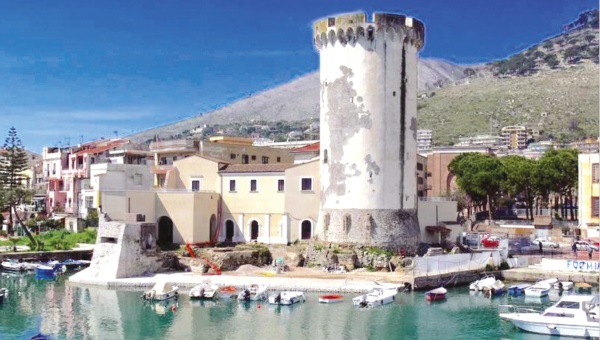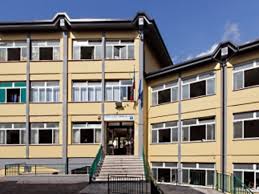The Italian school
The host city

* Formia
It was founded in ancient times by the Lacones and, later, in Roman times it became known as Formiae. Located right in the middle of the Gulf of Gaeta, here passed the queen Viarum, the Appian Way. Formia has origins that are lost in myth and related to the legend of Troy and the wandering of Ulysses on his way back. All the mythical tradition refers to this area as the land of the Lestrigoni, rough and primitive peoples, and to the city of these cannibal giants who landed there the ships of Ulysses and from which only he managed to save himself. Pre-Italic and Aurunca formation, as evidenced by the long and powerful border of polygonal walls, largely preserved along the coast and in the Castellone district, after the conquest of the territory by the Romans between the 5th and 4th century BC, joined the Latium adiectum. In the Roman order, Formia became civitas sine suffrage in 338 BC (or perhaps 332 BC), because the passage through its territory had always been safe. This passage was strategically important for the Romans, so much so that the city was passed by the Appian Way in 312 BC. In 188 BC, Formia received full Roman citizenship making it become a popular tourist resort in Roman times as evidenced by the numerous remains of villas, among which the most famous were those of Mamurra and Mecenate. On this stretch of the gulf Cicero built one of his favorite country houses and it was in Formia that Cicero died while trying to escape from the emperor Marco Antonio's proscriptions. The octagonal tower of the "Castle", with the fall of the Western Roman Empire, saw Formia plunder and its inhabitants, after the fall of the barbarians and the Greek-Gothic war, were forced to flee to the nearby hills, depopulating the town and then dividing it into two nuclei, which later became the suburbs of Gaeta: the Mola di Gaeta, named after the mills that were in operation, where Charles II of Angiò had erected, at the end of the 13th century, a fortress and, in the hilly area of Castellone. The name Castellone comes from the castle (Castel Leone, Castel Lyon and finally Castellone) built by Onorato I Caetani, Earl of Fondi, around the second half of the fourteenth century. The Clock Tower Gardens with rich citrus fruit have separated the two areas for centuries, as can be seen in the chorographic maps from the 16th and 18th centuries. The municipality was established in 1862, thanks to the merger of the villages Castellone and Mola of Gaeta as well as the hamlet Maranola. The city suffered heavy damage in January 1944 and in the following months, since it was located on the edge of the Gustav Line (known for the dramatic events of the destruction of Monte Cassino and the bloody battles in the mountains of Mignano Monte Lungo), much of Formia's historical and artistic heritage has gone lost; however, what remains is noteworthy.
I.I.S. E.Fermi-G.Filangieri

In the I.I.S Fermi Filangieri School there are about 140 teachers and 1050 students from 14 to 19 years old. Our students study English for five years, so this project will help them improving it, by meeting other people of other different countries, with different traditions. Our institute organizes and is promoter of abroad internships which were part of the Comenius partnership programs and now of the Erasmus+ programs financed by the European Community. In the past years we completed the following projects: 2011 - 13 a multilateral Comenius partnership called “ History tells us our story” in collaboration with a Greek, a Polish and a Spanish school. 2012 - 14 a multilateral Comenius partnership called “ Land surveying in European context” in collaboration with two Finnish and a Slovenian schools. 2014 - 16 our institute completed an Erasmus kA2 project. The title of this new project was “ Bridges" in which our institute was the coordinator school and collaborated with other four schools : a French, a Romanian, a Turkish and a Greek school. This project was selected by the Italian national Agency as one of Best Practice Projects of the year 2016. 2016 - 18 an Erasmus Projects K101 action entitled "ECOMED". The topic was the Bio engineering in the mediterranean sites, and were involved some European universities from Portugal (Evora), Spain (Madrid), England (Glasgow), Katerini (Greece) and Istambul (Turkie) , and some important european building companies. The project ended the december 2018. 2016 - 18 an Erasmus Projects K209 action named "Migrant", in which were involved schools from France, Poland, Turkey and Norway. The project ended the august 2018. Nowadays our institute is coordinator in a project entitled "Bridge for a Brighter Future", which started in September 1018 and in which are involved a Norvegian, a Turkish, a German and a Portuguese school. Thus our students were periodically engaged in internships with the partner countries. So they have the opportunity to compare their technical and linguistic competences with their foreign peers. The coordinator of the project will be Antonio Carollo, a teacher who from the 2010 is involved in this kind of projects. Other English teachers with a large experience of European projects (they are nowadays involved with Carollo in running Erasmus projects) are involved in the planning of this project. In case it is necessary, one of these teachers will take over very easily the role of coordinator of the project. The "Tallini" Institute has a long experience in taking part to Erasmus Projects, and the main motivation of this new project is that it is the continuation, -the next step- of the previous Bridges project which was selected by the Italian national Agency as one of Best Practice Projects of the year 2016. The teachers involved in the project will be more or less the same, and they are very expertised in this kind of projects.
Participating students
| Italian students in Greek mobility | |
|---|---|
|
Simona Criscuolo |
Lorena Puleo
|
|
Nadia Canzaniello |
Angelo Scognamiglio
|
|
Giorgio Francesco Moffa |
|
| Italian students in Latvia mobility | |
|---|---|
|
Flavio Lefano |
Martina Autiero
|
|
Sebastiano Palladino |
Francesca Capizzi
|
| Italian students in Turkey mobility | |
|---|---|
|
Claudia Cardillo |
Chiara del Pezzo
|
|
Laura Gutu |
Valeria L'Arco
|
|
Alice Lefano |
Sandra Matrone
|
|
Remo Recco |
Luca Traversi
|
| Italian students in Romania mobility | |
|---|---|
|
Claudia Cardillo |
Sebastiano Palladino
|
|
Laura Gutu |
Valeria L'Arco
|
|
Luca Traversi |
Angelo Forosetto
|
